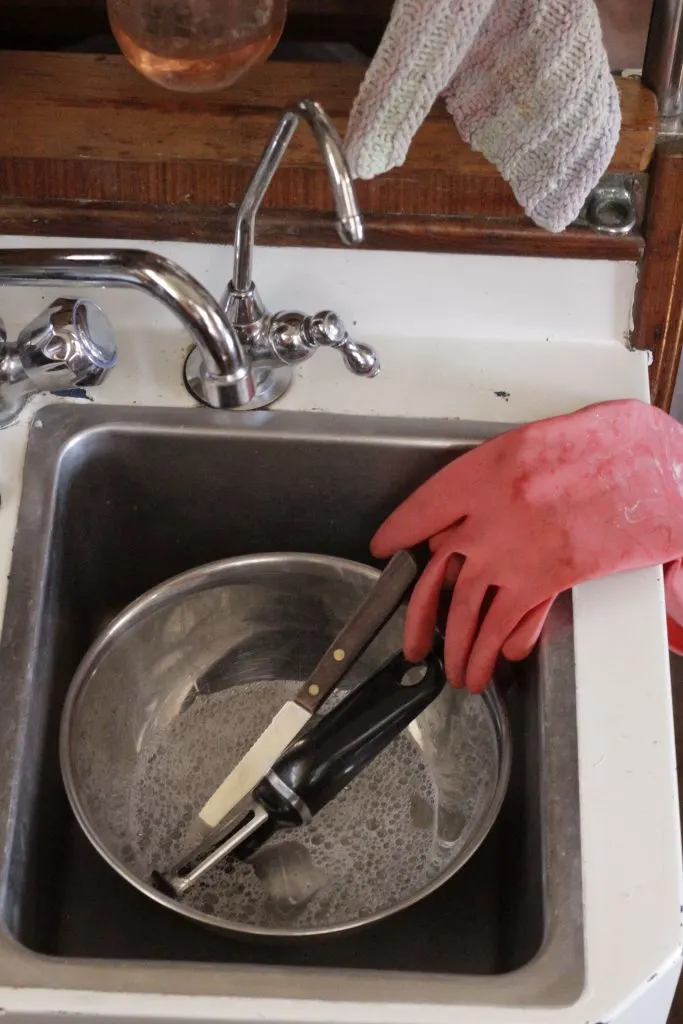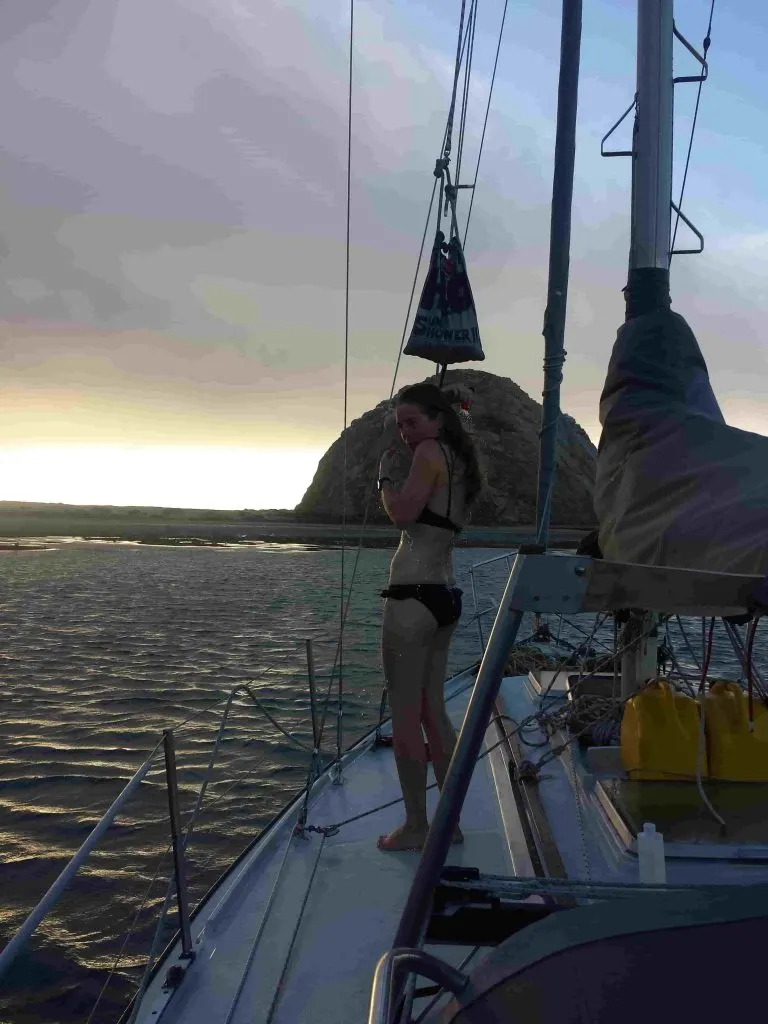Tips for managing water consumption on a boat
Nothing makes you appreciate your fresh water supply like lugging three 7 gallon water jugs down a 9 km dirt road in Mexico. We repeated this exercise several times during our stay in a remote fishing camp in the Sea of Cortez, fantasizing all the while about installing a water-maker. For us, like many boaters, water is the primary limiting factor in how long we can stay out at anchor. Fortunately, we’ve since discovered there’s plenty you can do to manage it.

Cooking and washing up
The first place to look for water savings is in the galley. With thoughtful meal planning and a new dishwashing regime, you’ll be well on your way to conserving H2O.
Wash your veg all at once. Rather than washing vegetables individually before cooking, wash them all at once. Add 1 cup of vinegar to 4 parts water and soak for 15 minutes to remove bacteria, viruses, pesticides and wax. Start with the cleanest veggies (e.g. lettuce, apples) and end with the dirtiest (e.g. potatoes, turnips) to avoid changing the water.
Plan one-pot meals with easy-to-clean cookware. Simple cooking and using Teflon pans means less time (and water) washing up! You can also use a paper towel to wipe foodstuff off pans and dishes before washing in water (or lick your plates clean if no one is looking).
Use a basin. Solemnly vow to never run water down the drain again. Find a wide flat-bottomed container that fits in your sink and use this basin for washing.
Nix the tap. Use a foot pump to conserve water or like one savvy Boondocker we know, pour from a small squeezy bottle or watering can when it doesn’t warrant filling up the basin.
Suds up with a biodegradable low-suds soap. As much as we all love a good lather, soap bubbles don’t make dishes any cleaner. Use low-suds soap and limit the amount of water you need to rinse off.
To use seawater or not. When you use sea water to clean dishes you are increasing your risk of exposure to microbial nasties. We’ve made ourselves sick from seawater washing on more than one occasion so we now avoid it altogether. Know your local waters and if you do salt-water wash consider sanitizing with bleach.

Hand-washing and showering
No doubt our landlubbing friends would be shocked by the lack of showering onboard our boat, nevertheless we’ve found it’s possible to smell sweet and scrimp on water too.
Use a hand sanitizing product. Washing hands can be a real water hog and can be minimized by keeping a hand sanitizing pump by the sink.
Take a bird bath. Taking a bird-bath (a.k.a sponge-bath) or using body wipes to clean is a great way to reduce the number of showers onboard. If you do shower, turn the water off while lathering.
Use a solar shower. Enjoy bathing alfresco? Solar showers are heavy-duty bags with a shower head attachment that can be readily found at camping supply stores. Once filled, they can be left on deck to warm in the sun. It not only allows you to measure out the water you use, but also has a reduced flow rate from a conventional shower.
Catch rinse water. Place a bucket under your shower to catch rinse water while you shower. The salvaged water can then be used for cleaning, for example rinsing off your chain plates or wetsuits.
Swap out your shampoo. Try switching to a dry shampoo or biodegradable low-suds shampoo. Dry shampoo is a powder that is now readily available at most convenience stores. For a natural alternative, you could rub a small amount of cornstarch into your scalp and brush out.

Cleaning up
Is the salt and grime starting to build up? You may also like to try one of these homemade boat cleaners. When it’s time to tidy, economize your water with one of these solutions.
Spray away. For general cleaning, mix 1 part vinegar to 3 parts water in a spray bottle and wipe down surfaces with rags (which you can later launder at home or the marina). This solution should take care of most general cleaning on board and eliminate the need to soak and clean a sponge.
Use a half-gallon tank sprayer. These are handy for most outdoor cleaning jobs like washing down stainless steel, cleaning the solar panels, or rinsing out snorkel gear.
While your level of water misering will vary depending on your boat’s capacity, the length of your cruise, and whether or not you have a water-maker, you’ll find that small changes in routine make a big difference to overall consumption. With these tips you can sit back in the cockpit, sip on a cool glass of H2O, and quietly congratulate yourself on your expert stewardship of the ship’s water supply.
Fiona McGlynn is an award-winning boating writer who created Waterborne as a place to learn about living aboard and traveling the world by sailboat. She has written for boating magazines including BoatUS, SAIL, Cruising World, and Good Old Boat. She’s also a contributing editor at Good Old Boat and BoatUS Magazine. In 2017, Fiona and her husband completed a 3-year, 13,000-mile voyage from Vancouver to Mexico to Australia on their 35-foot sailboat.

Beverly
Sunday 19th of May 2019
Ahoy Fiona, I recognize "The Rock" behind you, Moro Bay. I live there. Happy Sailing! Beverly